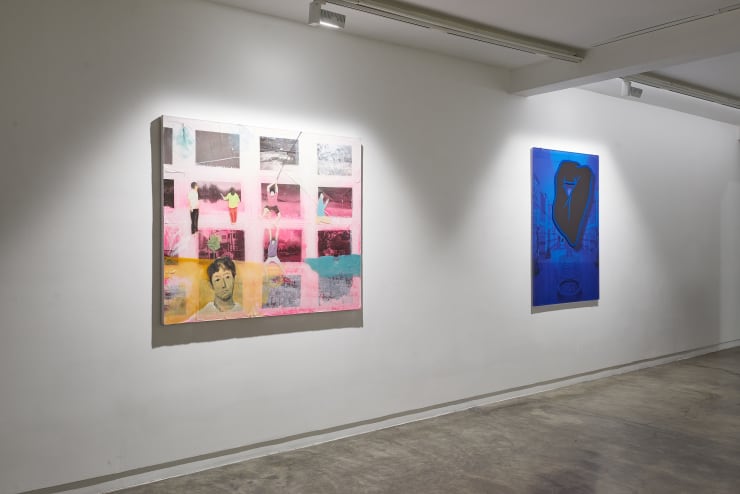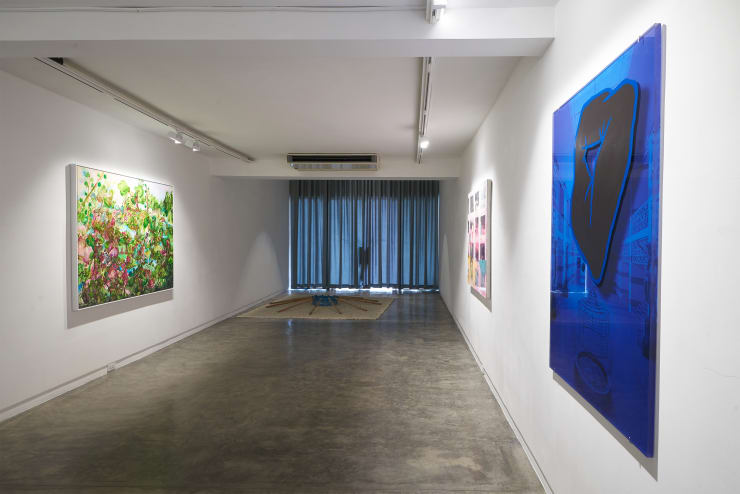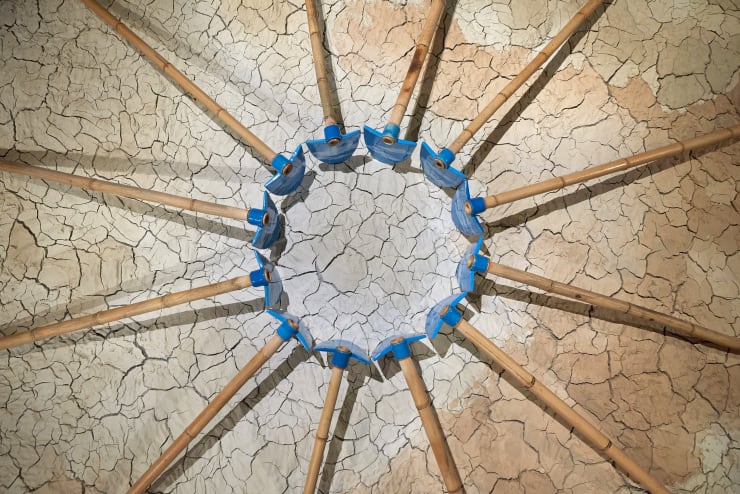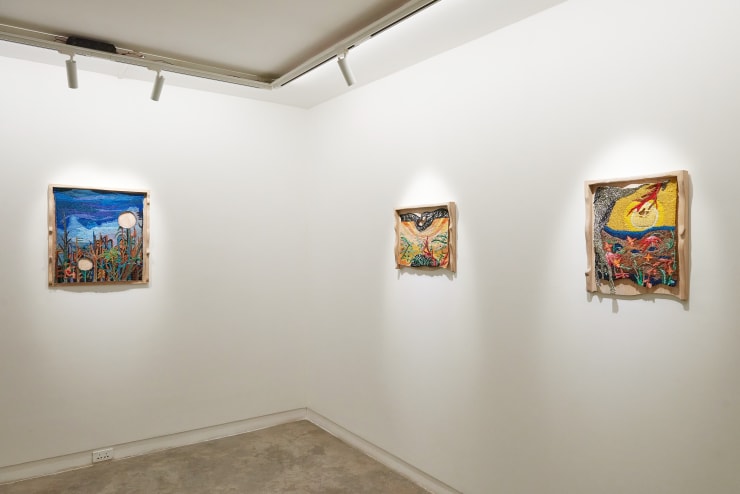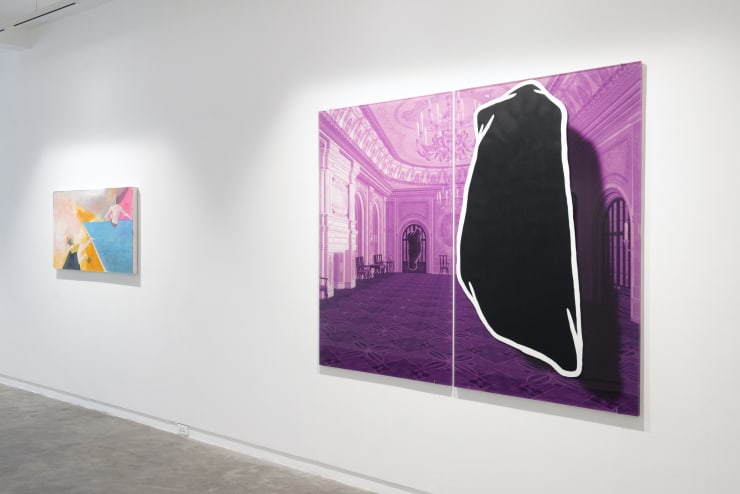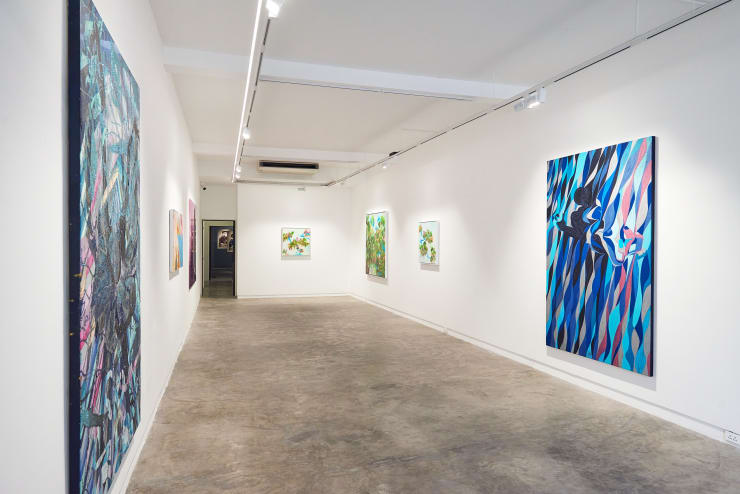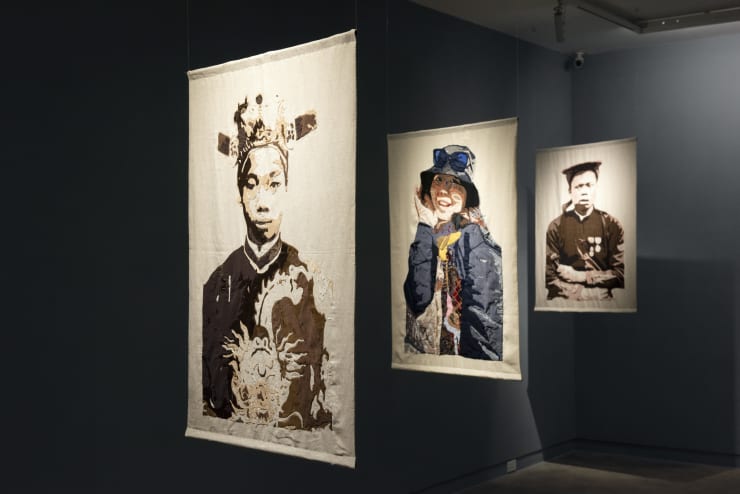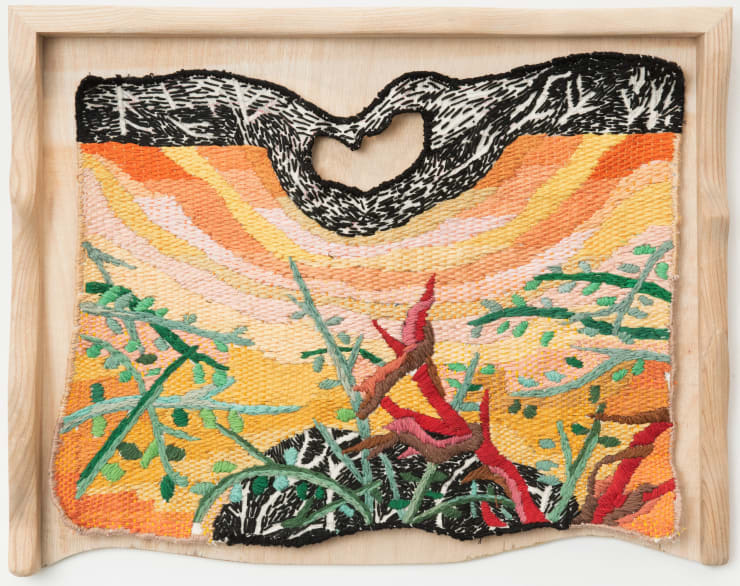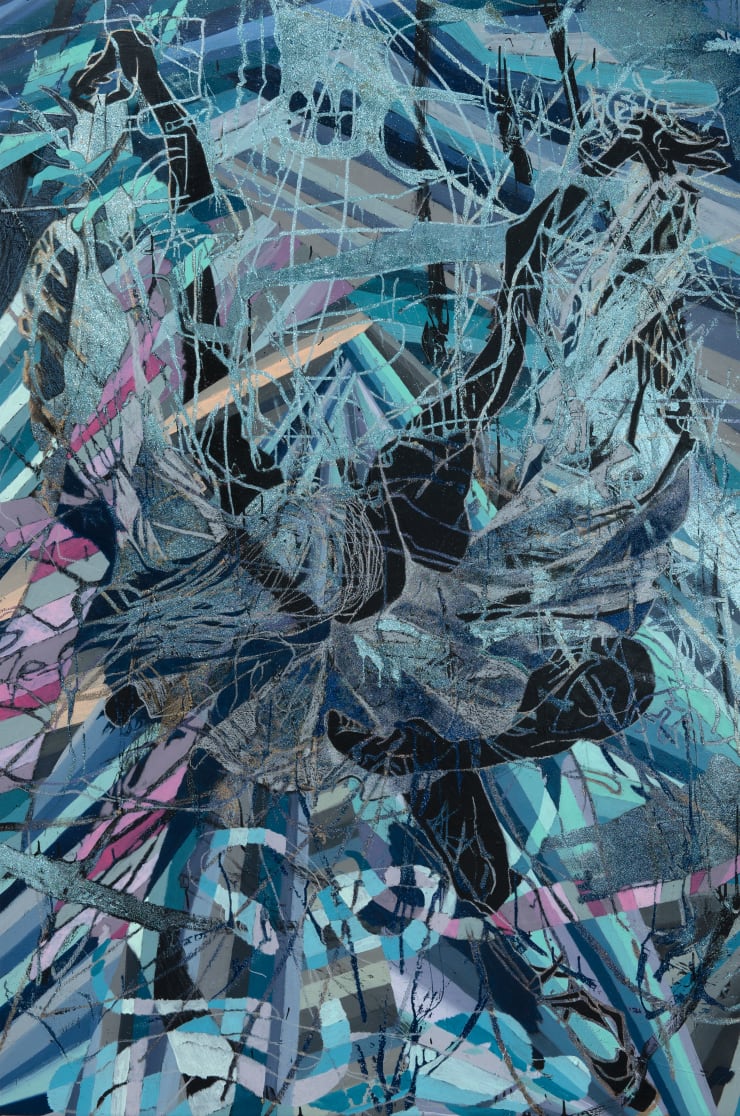Dept. of Speculation: Group Exhibition
Past exhibition
Overview
“Speculators on the universe…are no better than madmen.”
— Socrates was said to have said to one of his disciples.
Dept. of Speculation is a non-hierarchical agency that materialises and thrives only in the realm of thoughts and possibilities. Its existence was unknown to many including its members — the speculators, until recently. Just as the speculators attempt to make sense of what is happening in their lives, the department begins to take form. The department functions on a conjectural, pseudo-scientific premise: ideas about time and space as we know them are subject to the speculators’ very own empirical and personal reconfigurations.
At a certain altitude and location when day and night appear side by side, Ngô Đình Bảo Châu’s two-part installation Even a dead clock is right twice a day contemplates the stillness of time ticking away — a passing so flitting that it verges on obsolescence. Evoking the proverb “bán mặt cho đất, bán lưng cho trời" (literally translated as “selling one’s face to the ground, one’s back to the sky”) the work lays bare the reality of traditional agricultural practice, one that is punctuated by a never-ending cycle of physical labour, of hope and precarity. With the ceramic blade rendering the hoe completely useless, now lying tip down on a bed of cracked soil, Bảo Châu speculates — or simply unearths an avoided truth — a doomed outlook for farm work impacted by industrialisation and environment degradation.
Adapting found photographs from two distinct periods — French colonialism in Vietnam and the present day, and using hand-quilting techniques and embroidery on textile, Võ Trân Châu briefly chronicles the evolution of fashion and portraiture photography. If clothing was once made for utilitarian purposes, now it is the exterior aesthetic value that is more important. If photography was once an invention that only people with power and authority could possess — and so determined how the photographed subjects would appear; now it is so democratized to the point of overabundance. Besides such a history-laden narrative, it is worth noticing that Trân Châu’s meticulous and time-honoured handiwork helps conjure up the identity of these faces: when brought together in a room, they pose a stark polarity in appearance, yet in the virtual realm, they are just binary-codified specimens.
Also using found online images, Đỗ Thanh Lãng and Cian Duggan’s works are made to confuse and even ridicule one’s memory of time and space: any guess is a close one. Lãng’s paintings, all the while consistent in terms of technique and subject matter, depict deadpan ‘scenarios’ of a kind of hyperreality — sceneries and figures that are both familiar but bizarre. They are generously filled with colour and movement, but at the same time exuding a vacant feeling: they are realities and simulations of reality altogether. Cian’s printed plexiglass paintings form part of the series Mediums (2020-2022) in which the artist explores the culture of image authorship, memory perception, and the online/offline presence of space and architecture. A seamless and playful combination between his now-disappeared street tagging symbols and always available stock images, the series situates viewers in front of a portal where past, present and future collide.
Nadège David, assuming an all-encompassing god view perspective, envisions an almost utopia as non-human beings reclaim their place and dismantle the dominating anthropocentric order. In this new setting, the artist erects a world where all are equal and interconnected. From afar, Nadège’s paintings are imbued with joy and exuberance of life — animals dreaming, playing the game hide-and-seek undisturbed. Only upon closer inspection does one realise that her translucent, ethereal scenery is not entirely perfect: her fairyland is recalibrated on the ground of a pre-existing one whose naivety has been compromised by human greed and violence. Underneath what seems like a missed opportunity is actually remorseful anticipation of the future as informed by past prophecies like the Greek mythology of Erysichthon and Hieronymus Bosch’s eerie pictorial depictions of the world.
A sequel to his graphite on paper series Father’s Adagio (2019-2020), this trio of intricate tapestries sews to life the topography of Nghĩa Đặng’s psyche, which is mapped by the father-son relationship as well as his own inexhaustible pursuit for the other half of his self. A significant departure from the monochromatic portrayal of a heightened suspension of emotion, these new hand-embroidered works witness the arrival of technicolour landscapes and a change in tempo. From lethargic and stately to moderately-paced and at ease, it seems that Nghĩa’s journey has reached a new phase where he has come to terms with the incompleteness of being. Just as every rebirth begins with death and decay, the tapestries capture the near-end of a muted transition as ashes morph into living things, and shadow recedes so light can emerge. Also hinging on the state of transmutation but in a rather overt and imposing manner, Trúc-Anh theorises the precise moment of spiritual apparition and withdrawal. Of great emotive presence, the paintings depict life-sized human figures with every last bit of their strength traveling at high velocity and piercing through the fabrics of existence as they enter a trance.
Built upon the infinitude of figment, Dept. of Speculation resists any attempt at classification and any single interpretation staying true to the madness of this world.
Installation Views
Works
-
 Ngo Dinh Bao Chau, Even a dead clock is right twice a day, 2022
Ngo Dinh Bao Chau, Even a dead clock is right twice a day, 2022 -
 Nghia Dang, Father's Adagio #10, 2022
Nghia Dang, Father's Adagio #10, 2022 -
 Nghia Dang, Father's Adagio #9, 2022
Nghia Dang, Father's Adagio #9, 2022 -
 Nghia Dang, Glittering the moon returns, 2022
Nghia Dang, Glittering the moon returns, 2022 -
 Nadège David, Anatomy of a Polytical Forest, 2022
Nadège David, Anatomy of a Polytical Forest, 2022 -
 Nadège David, Jubilation in the World of Origins, 2021
Nadège David, Jubilation in the World of Origins, 2021 -
 Nadège David, Unique fantasy of the penitent lagomorph I, 2021
Nadège David, Unique fantasy of the penitent lagomorph I, 2021 -
 Nadège David, Unique fantasy of the penitent lagomorph II, 2021
Nadège David, Unique fantasy of the penitent lagomorph II, 2021 -
 Do Thanh Lang, Untitled, 2022
Do Thanh Lang, Untitled, 2022 -
 Do Thanh Lang, Untitled, 2022
Do Thanh Lang, Untitled, 2022 -
 Cian Duggan, Desperately One, 2021
Cian Duggan, Desperately One, 2021 -
 Cian Duggan, House of Stain, 2021
Cian Duggan, House of Stain, 2021 -
 Cian Duggan, Soaked in Silver Dust, 2021
Cian Duggan, Soaked in Silver Dust, 2021 -
 Truc-Anh, The Depth Riser, 2018
Truc-Anh, The Depth Riser, 2018 -
 Truc-Anh, The Flat Flesher, 2018
Truc-Anh, The Flat Flesher, 2018 -
 Vo Tran Chau, A boy, 2022
Vo Tran Chau, A boy, 2022 -
 Vo Tran Chau, A teacher, 2022
Vo Tran Chau, A teacher, 2022 -
 Vo Tran Chau, A little girl, 2022
Vo Tran Chau, A little girl, 2022 -
 Vo Tran Chau, Tirailleur, 2020
Vo Tran Chau, Tirailleur, 2020 -
 Vo Tran Chau, Coppersmith, 2020
Vo Tran Chau, Coppersmith, 2020 -
 Vo Tran Chau, Interpreter, 2020
Vo Tran Chau, Interpreter, 2020


